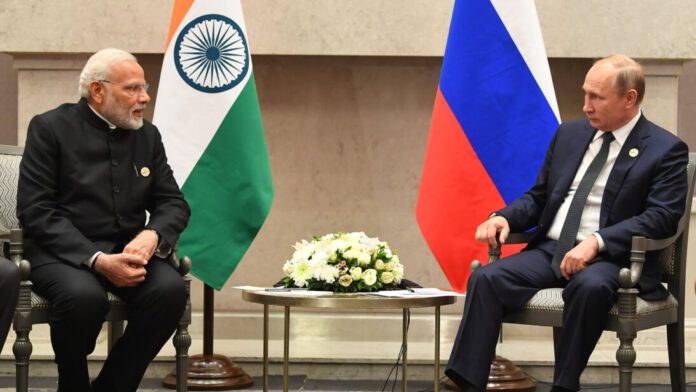
Henry Kissinger once remarked, “It may be dangerous to be America’s enemy, but to be America’s friend is fatal.” This paradox remains relevant today, particularly as the U.S. deepens ties with India under the guise of strategic partnership.
While President Biden has labeled the U.S.-India relationship the most important of the century, Trump openly praised Prime Minister Modi. India must look past flattering rhetoric to confront the realities of U.S. foreign policy—driven not by loyalty, but by cold strategic interests: containing China, securing cheap labor, and accessing new markets.
Modi’s early invitation to the Trump White House symbolized a larger soft power play. American influence in India—through tech ties, immigration, English-language dominance, and media funding—has fostered a largely favorable public perception. Yet this influence can easily translate into control. India risks becoming an “Asian Ukraine,” a pawn discarded once it outlives its strategic usefulness.
Recent U.S. actions in South Asia reinforce this concern. The removal of Bangladesh’s Sheikh Hasina—following her refusal to host a U.S. base—mirrored Washington’s pattern of punishing non-alignment. In Pakistan, Imran Khan’s ouster and imprisonment after resisting Western pressure over Russia, and the suppression of pro-China factions in Sri Lanka, further illustrate how U.S. interests override democratic ideals.
Ultimately, the U.S. does not seek equal partners—it seeks compliance. India must remain alert to the cost of closeness, lest it trades strategic autonomy for superficial approval.
History shows that the United States has never been a consistent or trustworthy ally to India. While India’s foreign policy establishment is often preoccupied with countering Chinese influence in South Asia, it has shown a striking lack of concern over U.S. interference. The unexplained deaths of Prime Minister Lal Bahadur Shastri and nuclear scientist Homi J. Bhabha in 1966—both suspected by some to involve the CIA—were quietly brushed aside, reflecting a long-standing reluctance to confront U.S. actions critically.
During the Cold War, the U.S. openly undermined India’s interests, penalizing its non-alignment and ties with the Soviet Union. It encouraged conflict with China but offered no real support when India was under pressure. In 1971, the U.S. even deployed warships to the Bay of Bengal in an attempt to deter Indian intervention in Bangladesh—an effort that failed only due to Soviet backing.
Even in the post-Cold War era, India’s growing closeness with the U.S. has yielded limited long-term benefits. While China and India were both targeted as emerging markets, China invested in technological self-sufficiency, while India became overly dependent on Western products and platforms. The results are stark: China dominates in AI patents, industrial technologies, and Fortune 500 companies; India lags far behind.
This disparity is rooted in India’s embrace of U.S.-style financial capitalism, which has prioritized integration with Western markets over indigenous capacity-building. India’s overreliance on the U.S. for capital, technology, pharmaceuticals, and media has stunted its strategic autonomy. The country’s foreign policy reflects this dependency—most visibly in its submission to U.S. sanctions against Iran. Similarly, India’s involvement in the QUAD, and refusal to join China’s Belt and Road Initiative, suggest alignment with Washington’s containment strategy rather than a truly independent vision.
Today, the U.S. reaps substantial benefits from India: cheap labor for tech and manufacturing, a vast consumer market, and a growing startup ecosystem hungry for Western capital. India has also become a geopolitical asset in Washington’s anti-China playbook. Yet, this asymmetric relationship is unlikely to remain stable. Rising anti-immigrant sentiment in the U.S. threatens visa programs critical to Indian workers. And as India’s economic ambition grows, Washington is unlikely to tolerate the rise of indigenous competitors to American tech giants.
The U.S. does not seek equal partnerships—it seeks strategic subordinates. Even Europe is beginning to recognize this reality. German Chancellor Friedrich Merz recently called for European independence from U.S. dominance, signaling a broader shift in global sentiment.
The decline of U.S. hegemony is unlikely to usher in a new empire, but rather a multipolar global order. Institutions like BRICS offer the Global South new frameworks for cooperation, trade, and political agency. As the U.S. dollar loses its dominance, so too will Washington’s ability to enforce its will through economic coercion.
The era of Western supremacy is drawing to a close. The future lies with Asia, Eurasia, and Africa. For India, the challenge is clear: to craft a foreign policy that breaks from dependency and embraces the opportunities of a truly multipolar world.
Source: South Asian Voices, NBC News, The Financial Express



